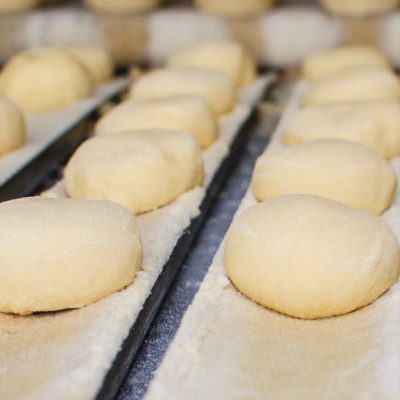Origin
Replacing mono and diglycerides was mainly driven by the emergence of clean label trends that have positively impacted the baking industry. Consumers are demanding simpler ingredients lists and more familiar ingredients on bakery products labels. This has prompted bakeries to rely on alternative dough conditioning ingredients.
Function
In baked goods, traditional emulsifiers provide two main functions: dough strengthening and crumb softening.
Application
Synergistic systems as mono and diglycerides replacers
| No. | Enzyme system | Product | Dough system |
| 1 | Xylanase + Glucose Oxidase / Hexose Oxidase (GOX / HOX) + Amyloglucosidase | Artisan-type breadsSold fresh or just-baked | SourdoughPre-ferments |
| 2 | (1) + Alpha-amylase + Maltogenic amylase + Maltotriose-forming amylase | Long shelf-life packaged white pan bread | No-time dough |
| 3 | (1) + Alpha-amylase (or Malted flour) | Low-sugar breadsMedium shelf-life (about 10 days) | Sponge and dough |
| 4 | Lecithin + Phospholipase + Glycolipase + (2) + Gums | Long shelf-life packaged whole wheat bread | No-time dough |
A closer look at xylanase, GOX and amyloglucosidase
Preparing enzyme blends from individual solutions has proven to be very successful in the production of clean label packaged bread and buns. Blends containing xylanase, GOX and amyloglucosidase, have been used as dough strengthener mixes. These blends are used in the production of high specific volume pan bread which requires a strong gluten matrix to retain gases and properly expand during oven spring.
In this case:
- Xylanase may target both water-extractable and water-unextractable arabinoxylans (WE- and WU-AXs) to improve gas retention and provide viscosity to the dough
- Glucose oxidase causes oxidation of gluten-forming proteins and promotes the oxidative gelation for AXs to act as gums
- Amyloglucosidase quickly provides substrate to GOX to become functional
Lipase and lecithin
Lecithin, a commonly used natural emulsifier can be modified enzymatically with lipase to improve its functionality and make it suitable for mono- and diglycerides replacement. Lipase targets native flour polar lipids, converting lecithin (phosphatidylcholine) to lysolecithin and digalactosyl-diglycerides to digalactosyl-monoglycerides.1 Such lipases provide alternatives to traditionally used dough stabilizing emulsifiers such as DATEM and SSL.
Hydrocolloids
Polysaccharides such as alginates, psyllium gum and carboxymethyl celluloses can be effective in reducing staling and reducing crumb firmness in baked goods. Alginates, kappa-carrageenan and xanthan can also be effective dough stabilizers during proofing. These hydrocolloids are suitable alternatives to glycerol monostearate, SSL and DATEM.2
Challenges with replacing mono and diglycerides
- Producing or designing with low fat or lean baked goods.
- Working with liquid or fluid fats rather than hard or plastic shortenings.
- Producing clean label products with required shelf-life similar to GMS, SSL and/or DATEM.
- Having lidded pan breads of low density (i.e. weight of scaled dough per volume of pan cavity). Dough densities lower than 0.21 g/cm3 often negatively impacts product volume due to a lack in dough mass to support the structural expansion during oven spring.
- Identify optimum conditions for enzymes to work at their peak activity, including:
- pH
- Water activity
- Contact time between substrate and enzyme (sponge and dough systems may be preferred over no-time doughs)
- Amount of substrate (e.g. damaged starch, glucose, oxygen, lipids, pentosans)
- Temperature range
- Presence of enzyme inhibitors in flour
- Competition with yeast and other enzymes in dough for oxygen
- Presence or absence of co-factors (e.g. metal ions)
References
- Van Oort, M. “Enzymes in bread making.” Enzymes in Food Technology, 2nd edition, Blackwell Publishing Ltd, 2010, pp. 103–143.
- BeMiller, J.N. “Carbohydrate Nutrition, Dietary Fiber, Bulking Agents, and Fat Mimetics.” Carbohydrate Chemistry for Food Scientists, 3rd edition, AACCI. Published by Elsevier Inc. in cooperation with AACC International, 2019, pp. 323–346.

